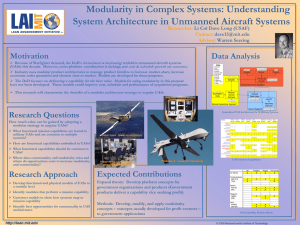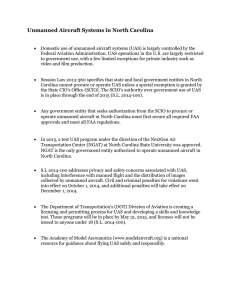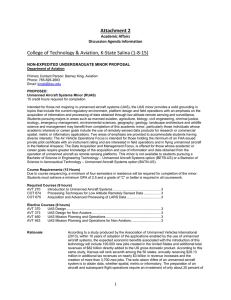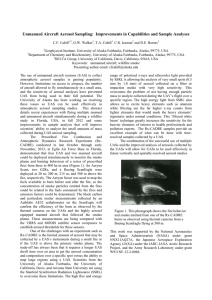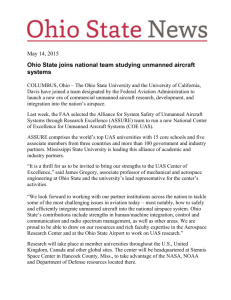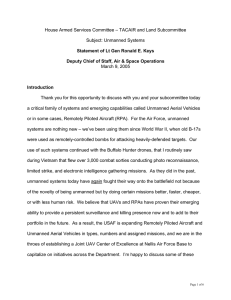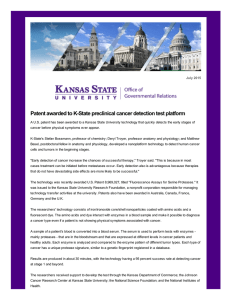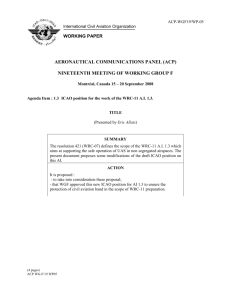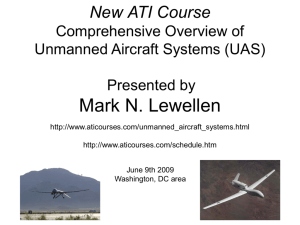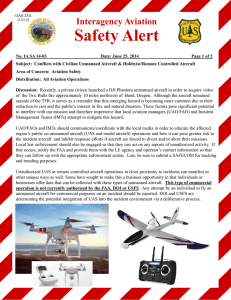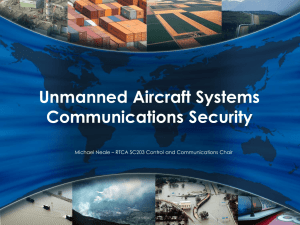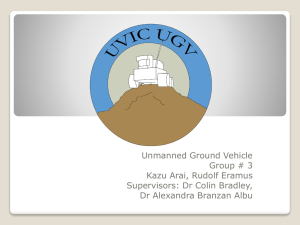Understanding the Roles of Modularity and
advertisement
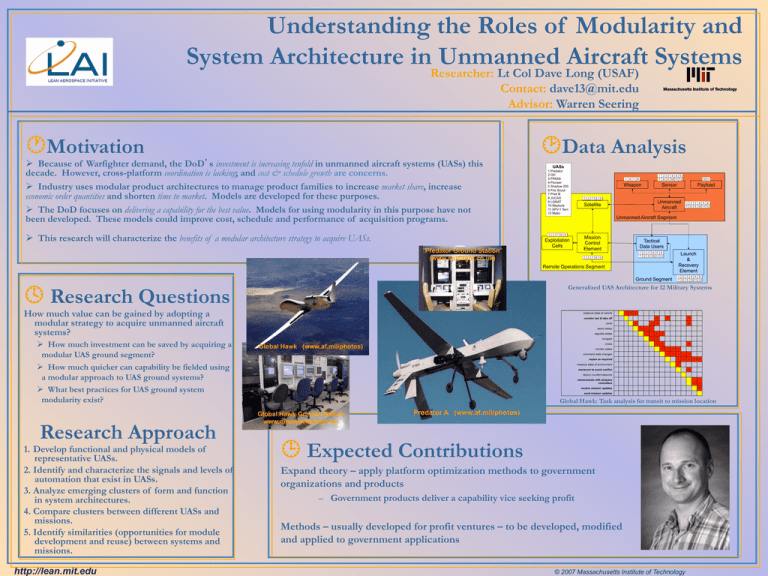
Understanding the Roles of Modularity and System Architecture in Unmanned Aircraft Systems Researcher: Lt Col Dave Long (USAF) Contact: dave13@mit.edu Advisor: Warren Seering Motivation Ø Because of Warfighter demand, the DoD’s investment is increasing tenfold in unmanned aircraft systems (UASs) this decade. However, cross-platform coordination is lacking; and cost & schedule growth are concerns. Ø Industry uses modular product architectures to manage product families to increase market share, increase economic order quantities and shorten time to market. Models are developed for these purposes. Ø The DoD focuses on delivering a capability for the best value. Models for using modularity in this purpose have not been developed. These models could improve cost, schedule and performance of acquisition programs. Ø This research will characterize the benefits of a modular architecture strategy to acquire UASs. Predator Ground Station (www.spyflight.co.uk) Data Analysis UASs 1 Predator 2 GH 3 FPASS 4 Pioneer 5 Shadow 200 6 Fire Scout 7 Pred B 8 JUCAS 9 I-GNAT 10 Neptune 11 XPV-1 Tern 12 Mako Exploitation Cells Weapon Sensor Payload Unmanned Aircraft Satellite Unmanned Aircraft Segment Mission Control Element Tactical Data Users Launch & Recovery Element Remote Operations Segment Ground Segment Research Questions Generalized UAS Architecture for 12 Military Systems How much value can be gained by adopting a modular strategy to acquire unmanned aircraft systems? Ø How much investment can be saved by acquiring a modular UAS ground segment? Ø How much quicker can capability be fielded using a modular approach to UAS ground systems? Ø What best practices for UAS ground system modularity exist? Research Approach 1. Develop functional and physical models of representative UASs. 2. Identify and characterize the signals and levels of automation that exist in UASs. 3. Analyze emerging clusters of form and function in system architectures. 4. Compare clusters between different UASs and missions. 5. Identify similarities (opportunities for module development and reuse) between systems and missions. http://lean.mit.edu measure state of vehicle 1 1 1 monitor taxi & take off climb report status regulate states navigate cruise Global Hawk (www.af.mil/photos) monitor states 1 1 1 1 1 1 1 1 1 1 1 1 1 1 1 1 1 1 1 1 1 1 1 1 1 1 replan as required 1 1 1 measure state of environment 1 command state changes 1 1 maneuver to avoid conflict 1 1 1 1 1 deploy countermeasures communicate with airspace controllers receive mission updates 1 send mission updates Global Hawk: Task analysis for transit to mission location Global Hawk Ground Station www.directionsmag.com Predator A (www.af.mil/photos) Expected Contributions Expand theory – apply platform optimization methods to government organizations and products – Government products deliver a capability vice seeking profit Methods – usually developed for profit ventures – to be developed, modified and applied to government applications © 2007 Massachusetts Institute of Technology
